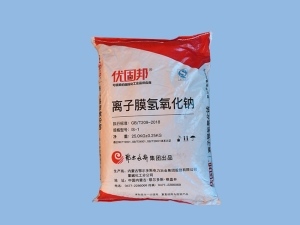Application and inspection method of granular caustic soda
Granular alkali is mainly used as a chemical raw material and is an important basic chemical raw material. Used in the chemical industry for the manufacture of formic acid, oxalic acid, borax, phenol, sodium cyanide, soap, synthetic fatty acids, synthetic detergents, etc.; used in the textile printing and dyeing industry for desizing agents, scouring agents, mercerizing agents, vat dyes and Haichang blue dyes Solvent. Aluminum hydroxide, aluminum oxide and metal surface treatment agent for smelting industry. The instrument industry is mainly used as an acid neutralizer, decolorizer and deodorant. The adhesive industry is mainly used as starch gelatinizer and neutralizer. In addition, it is widely used in enamel, medicine, cosmetics, leather, paint, pesticide, glass and other industries.
In most industries, granular caustic soda is better than flake caustic soda and other solid caustic soda, so it is widely welcomed by industrial manufacturing. However, the production process of granular caustic soda is also difficult to produce flake caustic soda and other solid caustic soda.
Granules are an indispensable application in people's daily life. Its high purity will directly endanger the price and practical application effect. So many people worry about whether their residue is harmful in their choice. We need to master some inspection methods.
1. After the solid base is formed, there will be a small amount of residue. If the residue does not come out, it will jeopardize its purity and destroy its reaction with other chemicals.
2. Accurately weigh 1.5-2.0g sample into a 250ml measuring cup on the analytical balance, release water without melting carbon dioxide.
3. Transfer the solid alkali quantitative analysis to a 250ml volumetric flask, dilute the tap water to the mark, and shake well.
4. Draw 25.00ml (3 parts) of the test solution into a 250ml Erlenmeyer flask, add a few drops of phenolphthalein indicator, the aqueous solution changes from bright red to white, and the standard drop is 0.1mmol/L. have no color. Record the volume V1 of the hydrochloric acid standard sample on the terminal, and then record 2 drops of methyl orange indicator.
5. Titrate the test tube again with the standard hydrochloric acid solution until the aqueous solution changes from light yellow to orange, which is the end point.
6. Record the consumption of hydrochloric acid standard solution.
That's it for today's content. There will be a small amount of residue in the granular alkali, which is normal, but too much will damage its quality. Everyone can measure according to this method, and can accurately calculate the moisture content of the residue.


